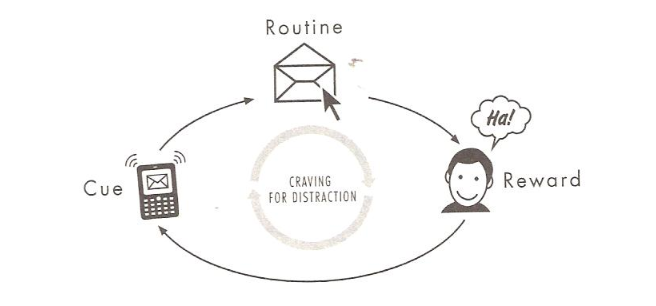How much do you remember about brushing your teeth? Have you ever found yourself scrolling through Facebook or Instagram again when you only just closed it? We spend up to 50% of our day to day lives performing automatic behaviours, otherwise known as habits. These habits can be so strong that even when we know if a habit isn’t good for us, the habit still triggers and we catch ourselves performing it anyway. So, what are they, why do we have them and how can we help ourselves make new ones?
What is a habit?
According to British dictionaries, a habit is: ‘A settled or regular tendency or practice, especially one that is hard to give up.’
‘Something that you do often and regularly, sometimes without knowing that you are doing it.’
Why do we have habits?
Many studies have been performed to look at habits as they are a frequent obstacle to overcome in healthcare. In our brains, a habit can help to reduce how much energy we spend processing the same set of information if we see it often and regularly enough. This is how we go from needing to check directions to get to a new workplace to unconsciously navigating the route without even checking the signs. The diagram here demonstrates the findings of one of these studies. As you can see, once it has recognised the cue, brain activity drops almost in half right up until the end of the habit where it gets the reward. This introduces us to the basic structure of a habit.
Habits all have:
- A cue, something distinct which then triggers…
- the routine, the behaviours that we perform in order to get to…
- the reward, something that satisfies…
- the initial craving. The stronger the craving, the more likely a habit will be triggered. Therefore a sugary drink will be chosen more easily than choosing to drink water, as water doesn’t trigger the same sense of craving or reward.
How can we create new habits?
By understanding what forms a habit, we can start to work out how we can make a new one or alter the ones we have already. Each habit must have each part of the cycle in place, repeated often, in order to create the circuit in our brain. For example, it’s easy to say ‘this year I am going to go to the gym more’, attend the gym a few times and then other priorities get in the way .
The easiest way to create a new habit is to add to one that you already do. That way you don’t need to change too much in your day to fit something else in. For example, we brush our teeth twice in the day. Add to that stretching out neck and shoulders either before or after and, over time, it becomes natural for us to stretch whenever we go to brush our teeth.
Sometimes we want to replace a habit completely, for example snacking on unhealthy foods.
This can be tough because, once we have created a habit in our brain, it can’t be erased. However, knowing what makes up our habit cycle allows us to change it into a different habit.
The key is to keep the cue, reward and craving all the same whilst changing the routine to something that still satisfies that loop. For example, changing our snack food for something healthier that still satisfies us and keeps us full. In order to help the new habit to form and settle in, we need to put energy into sticking to it over a period of time. Each time we go through the cycle, the circuit we are forming in the brain becomes stronger. Other ways to help can include having an accountability partner or logging your habits in a notebook tracker.
So, to summarise:
- Habits are automatic behaviours we use to save energy for our brains.
- A habit is made up of a cue, a routine, a reward and a craving.
- In order to change a habit we must keep the cycle the same and change the routine.
Here are some ideas for habits to include in your day:
- Think of 3 gratitudes, something you are grateful for, each day.
- Getting up from your desk once an hour to help your joints.
- Drink more water in the day.
- Spend 15 minutes a day reading a book.
- Compliment someone every day.
Check our Instagram and Facebook pages throughout the month for our Top Tips for exercises on the subject
All pictures from Power of Habits by Charles Duhigg


